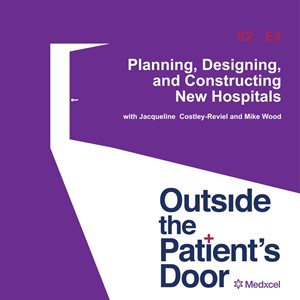(5/9/2022)
Picture the last time you stayed at a nice hotel or ate dinner at a fancy restaurant. Was there soft but ample lighting? Cozy seating arrangements? Did you see or use a digital kiosk or tablet provided by hospitality staff? The hospitality industry exists to ensure customers have an enjoyable experience away from home. As noted by hospitality tech provider Cvent, “Making sure each individual guest is taken care of is paramount.”
This is true for hospitals, too. The patient experience is paramount to deliver quality care. It starts with employees and extends to patients’ families and visitors, and anyone who enters a healthcare facility.

As new hospitals are being constructed and older hospitals are being remodeled, we’re seeing three distinct trends taking shape across the U.S.
1.The Hospitality Trend
No matter if it's a rural hospital or a large acute care center, we are seeing the incorporation of the “hospitality trend” into facility designs. From furniture and fixtures inside the hospital to the overall exterior presence of the building itself, hospitality trends that the industry have been talking about for 25 years are coming to life. We – as patients, customers, employees, you name it – want the same conveniences we’ve come to expect in other areas of our lives. Those conveniences lead to things like retail inside the hospital environment.
It's not just a small gift shop and the cafeteria anymore. There are Starbucks, sandwich shops and other retail venues that hospital visitors, patients’ families, and even patients who are more mobile, can come down and take advantage of.
2.Safety
On the other side of more retail and services for visitors is the discussion of who has access to what areas of the facility. When we’re building new environments, one of our top considerations is security. In recent years, we have increased our awareness of how secure we have to make a healthcare environment to keep people safe, and that leads to levels of access in different areas of the building. In Disney resort terms, we ask ourselves, Who has access to the back of the house? Who has a front-of-house presence? Why and how we achieve those levels of access is critical for safety across the environment.
Relatedly, a topic that has been heavily discussed over the past several years is how we treat different sections of hospitals that contain infectious environments. COVID-19 made us hyper-aware of how we move healthy patients around a facility with other patients who are at mixed levels of infectious diseases. Negative or positive air pressure systems, ventilation and more all contribute to what a safe environment looks like.
3.Technology
The level of technology being incorporated into facility remodels and new construction builds isn’t unprecedented to other industries, but signals a major shift for healthcare facilities. It is important to plan for all levels of technology that staff and patients are going to need. This means making space not only for patients to be able to plug in their laptops and cell phones, but for staff to have touchless doors to make it easier for them to move patients around and maintain infection control. Voice activation is growing, as well, for elevators and coffee machines and more, all borne from the devastating spread of COVID-19.
All of these elements are vital for the patient experience, and we can receive valuable feedback from patients directly. We’re returning to a prior practice of talking to a variety of people within a hospital about what they want and need in the environment. Advocates for certain departments, or even just one shared area, provide valuable insights through their lived experiences. For example, you shouldn’t have large south-facing windows without easy-to-use shades. It may look great in a rendering, but the insight from patients who are trying to fill out paperwork or work on a tablet with the sun in their eyes know where the trade-off is.
That said, patients and visitors don’t dictate every design element. For Medxcel in particular, our designers use a technique called “evidence-based design”. This means we don't implement elements into our design standards unless we have evidence from research or experience that it works. We must be able to illustrate how a change will definitively improve the experience.
Hospital design is no small task, which is why Medxcel Vice President of Planning, Design and Construction Mike Wood and CEO of Allen Parish Hospital Jacqueline Costley-Reviel recently sat down for a wide-ranging conversation on the do’s and don’ts of hospital construction on our podcast “Outside the Patient’s Door.” You can listen to the full conversation
here.